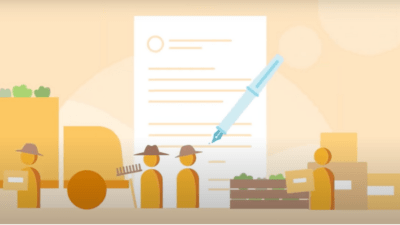When signed into law in 2021, the American Rescue Plan Act was lauded as a significant investment in the American economy and the well-being of its citizens, helping the nation recover from the devastating impact of the pandemic by providing direct support to those who needed it most. From lost revenue, increased health expenses, and negative economic impacts from individual households to large-scale industries, the need was great, and the federal funding was designed to match – a total of $350 billion in aid to be distributed to states, local governments, and Tribal nations. Funds could be designated for direct assistance to households, supporting small businesses, replenishing public sector revenue, or investing in water utilities and broadband infrastructure.
But how do federal funds actually move into the hands of those who need them? And how do those in need know how and where to access those funds?
To support local leaders and community members in understanding and accessing American Rescue Plan Act funds, the Southern Economic Advancement Project (SEAP) recently released an updated version of its ARPA Local Funds Tracker. Founded in 2019 by gubernatorial candidate Stacey Abrams, SEAP coordinates and amplifies the efforts of existing organizations and networks to advance policies that improve economic security, healthcare access and environmental justice in the American South.
The first iteration of SEAP’s dashboard identified over 200 cities in Alabama, Georgia, Mississippi, North Carolina and Washington State with populations over 20,000. Now, on the second anniversary of ARPA’s signing, SEAP has released an updated dashboard that includes cities and counties in all fifty states. This expansion reflects SEAP’s ongoing commitment to center community engagement and equity in policy and fiscal decisions.
The ARP Spending Tracker catalogs and curates existing fund plans in cities and counties, as well as highlighting remaining funds for the applicable location. The tracker also provides community members with essential transparency by detailing the projects to which local officials have allocated funds; local leaders are then empowered to understand and access federal funding.
“[There is a] critical need to bridge the divide between the government and the community, and we know transparency plays a key part in closing this gap,” said Sarah Beth Gehl, executive director of SEAP, on the release of the updated dashboard. “We created this Local Funds Tracker to ensure community members know there’s still time to make their voice heard in ARP spending decisions.”
This updated dashboard is one more step in SEAP’s impressive vision for a transformed American South in which historically marginalized and vulnerable individuals, families and communities have equitable opportunities for economic success.
State and local governments have until December 31, 2024, to commit ARPA funds. Find out how you can get involved with SEAP’s ARP Activist Guide and ARP Toolkit.
Read More about the Southern Economic Advancement Project
- Southern Economic Advancement Project, “The SEAP Story”
- Every Child Thrives, “Broadening kids’ opportunities across the American South: the Southern Economic Advancement Project”
- Every Child Thrives, “Lessons from SEAP: advancing equity in federal funding implementation”







Comments